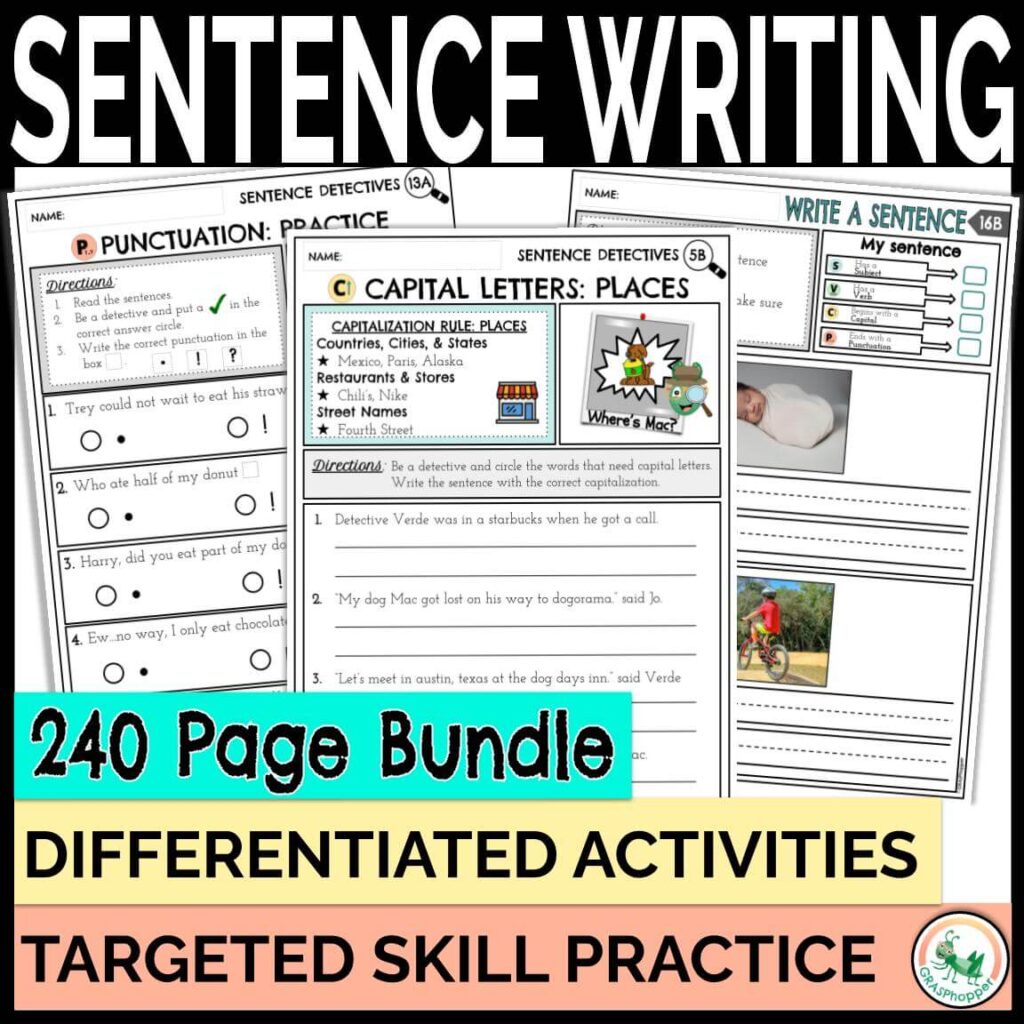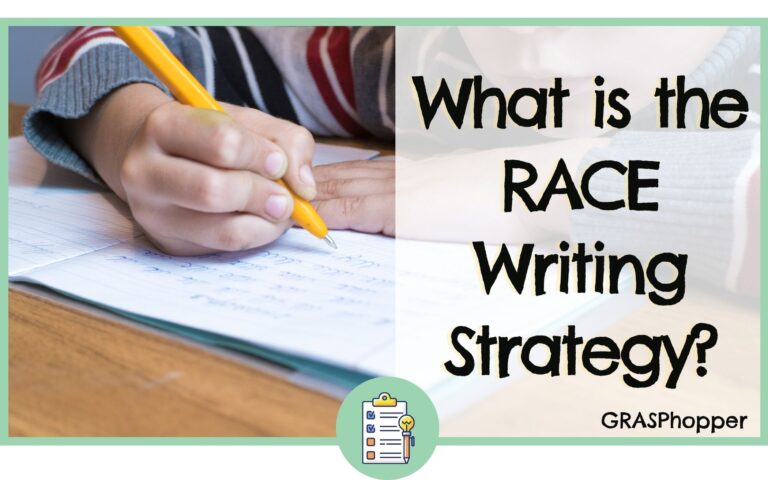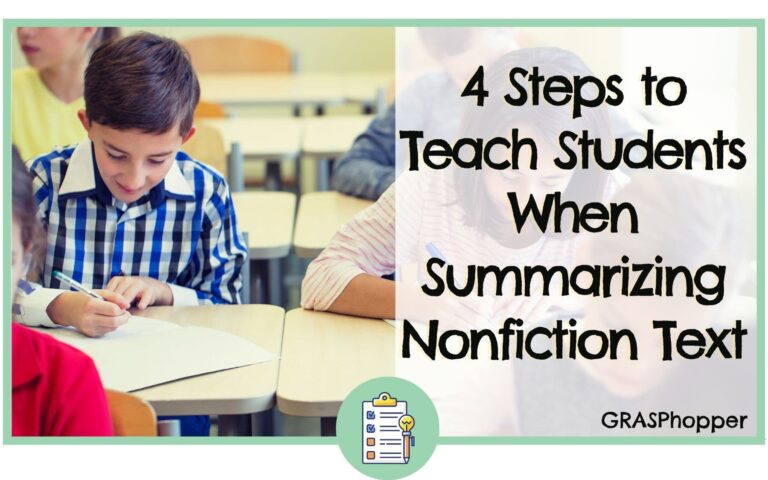
Teaching sentence structure can feel tricky when you are working with primary students – after all, they are just learning how to put their thoughts into words! We have found that the best way to help students conquer sentence writing is by teaching the four essential parts of a strong sentence.
Why is teaching sentence structure so important?
A strong foundation in sentence structure can truly make a world of difference for students. We have seen many students struggle with writing, and end up being referred to special education because their writing is far below grade level. As we dig deeper, we see that the issue is often that the student has no knowledge of basic sentence structure!
All writing begins with strong, complete sentences. The earlier students understand this, the more confident they will feel writing and the less overwhelmed they will be when it comes time to write five-paragraph essays.
Students who understand basic sentence structure are also able to identify their own mistakes in their writing. When students understand the four parts they need in a sentence, they can easily check their writing to see if those elements are present. They will also understand your comments more. You can say, “Check your subject” all day, but if a student doesn’t understand what that is – they will not be able to improve their writing.

Lastly, being able to write strong sentences means students will have an easier time expanding their writing later. When it comes time to work on descriptive and complex writing, students will be able to add on to the knowledge they already have about complete sentences.
In order to make sure your students have a strong foundation in sentence structure, we recommend teaching them the four parts of a sentence:
Part 1: How to Write a Clear Subject
When explaining subjects to our students, we offer the following definition: The subject is the who of the sentence. Specifically, who is doing something in the sentence. The subject can be a person, animal, place, or thing.
Where we have seen many students run into issues is that they will identify any noun in the sentence as the subject. It’s important that we help students understand that the subject is doing something. This is why we recommend teaching subjects and predicate together, so students can see how they are connected.
A few other key things worth noting are pronouns and commands. Pronouns (he, she, it, etc.) do not look like our typical nouns, so students may not recognize them when they are the subject. Commands are especially tricky because the subject is a hidden “you”. Continue to teach and spiral in these concepts, so students can get the hang of them.
To practice subjects, begin by simply having students identify the subject in a provided sentence. Then, have students practice writing their own sentences and identifying the subject.
Our Subject Sentence Detectives resource is filled with lots of opportunities for your students to practice the concept of a subject through engaging mystery stories.
Part 2: How to Write a Predicate
When teaching predicates, we give our students the following definition: Predicates are what the subject is doing. Predicates are verbs. These verbs can be helping verbs or linking verbs.
The trickiest, and also the most important item to practice, is helping verbs. Oftentimes, students are able to pick up on the action verb. Once they understand what the subject is doing, the action verb is a clear “do”. However, helping verbs are more difficult because they often appear to students as if the subject isn’t doing anything.
To practice these helping verbs, give students a reference chart they can use to remind them of the different helping verbs. Then, have them continue to practice identifying and creating sentences with a subject and predicate. These two elements are the key to sentence structure, so help students see these items as inseparable pairs!
Part 3: How to Use Correct Punctuation in a Sentence
When talking about punctuation with students, you want to make sure students know the different types and when to use them. Specifically, you want to review periods, exclamation points, and question marks. Emphasize with students that one of these punctuation marks must come at the end of their sentence. This tells the reader that their sentence is complete.
Understanding these punctuation types not only helps students understand how to write complete sentences but also helps with reading fluency. One of our favorite activities to practice punctuation is through expressive reading. Create silly sentences with different punctuation at the end. Then have students practice reading with the inflection needed (it’s fun to let them exaggerate a little!).
Help your students develop their understanding of ending punctuation rules with our Punctuation Sentence Detectives resource.
Part 4: How to Use Correct Capitalization in a Sentence
Capitalization is a fairly simple skill, but there are several rules to memorize. For this reason, the earlier students learn to implement these rules, the better! We recommend teaching six capitalization rules to students: the beginning of the sentence, names, places, the pronoun I, calendar words, and titles.
You can spiral in this skill during morning meetings and circle time. Give students different practice words or sentences, and have them apply the capitalization rules.
Building Strong Writers
When your students begin to master these four elements of sentence structure, you will see a whole new level of their writing! This necessary foundation will help your students be successful writers, who are capable of writing beautiful sentences and lengthy, complex essays.
We have a few resources that can help you implement this four part process for sentence structure.
The first is our YouTube channel. We have several videos focused just on sentence structure. These are great to use during a mini-lesson, review station, or for online learning.
We also have a differentiated sentence writing bundle with tons of activities and mini-lessons to make teaching sentence structure a little bit easier.













